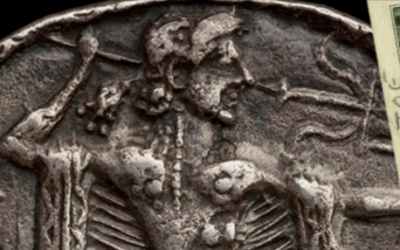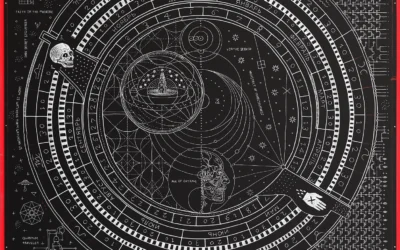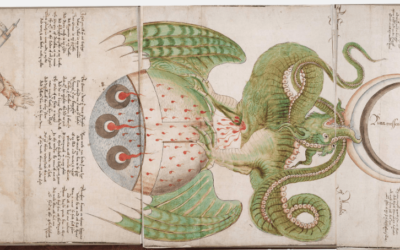
The Divided Mind and the Quest for Meaning >Part 1 < Part 2 Part 3
Navigating the Complexity of Human Consciousness
The Internal Struggle of the Human Psyche
In the landscape of human consciousness, a profound and often tumultuous battle rages – a conflict between our subjective, intuitive experiences and our objective, rational understanding of the world. This internal struggle, which lies at the core of our psyche, has been a subject of fascination for philosophers, psychologists, and artists throughout history. It is a struggle that shapes our decisions, our relationships, and our very sense of self.
To illustrate this concept, we can turn to a scene from Chris Morris’s darkly comedic film “Four Lions.” In this pivotal moment, a young terrorist recruit is manipulated by his leader through a clever exploitation of the dichotomy between emotion and reason. The leader convinces the impressionable young man that his heart and brain are “mixed up,” asserting that the part feeling empathy for innocent lives is not his heart, but his misguided brain in disguise.
This scene, while exaggerated for comedic effect, highlights a tactic often employed by high-control groups, cults, and coercive systems: the separation of intellect from humanity. By doing so, these groups can manipulate individuals into actions that defy both logic and moral intuition. But beyond its use as a manipulation tactic, this scene serves as a powerful metaphor for the internal conflict we all face in our quest for meaning and understanding.
The Dual Nature of Consciousness: Emotion and Logic
Edward Edinger’s Perspective: Two Modes of Consciousness
To delve deeper into this concept, we turn to the work of Edward Edinger, a renowned Jungian analyst and author of the seminal book “Ego and Archetype.” Edinger presents a compelling argument that human consciousness is fundamentally divided into two distinct yet interconnected modes:
- The Subjective, Emotional Realm of the Psyche
- The Objective, Rational Realm of the Mind
The Subjective, Emotional Realm
This aspect of our consciousness is governed by intuitions, feelings, and personal experiences. It is the domain of the heart, where our deepest desires, fears, and aspirations reside. This realm seeks to make sense of our lives through myth, metaphor, and symbolic understanding. It yearns for meaning, connection, and transcendence, shaping our perception of the world and our place within it.
The emotional realm is where we experience the raw, unfiltered essence of our human experience. It’s where we feel love, hatred, joy, sorrow, and the myriad of complex emotions that color our existence. This part of our psyche doesn’t concern itself with logic or empirical evidence; instead, it operates on the currency of felt experience and intuitive knowing.
The Objective, Rational Realm
In contrast, the rational realm of our mind is governed by logic, empirical evidence, and the scientific method. This is the domain of the brain, where our capacity for reason, analysis, and critical thinking resides. It seeks to understand the world as it is, rather than as we wish it to be, demanding proof, consistency, and coherence in our beliefs and actions.
This objective realm is what allows us to solve complex problems, make informed decisions, and navigate the intricacies of our modern world. It’s the part of us that can step back from our immediate emotional reactions and analyze situations from a more detached, logical perspective.
The Conflict Between Heart and Head
The crux of our internal struggle lies in the seeming incompatibility of these two modes of consciousness. We often find ourselves torn between our emotional impulses and our rational judgments, between our desire for meaning and our commitment to truth. This conflict can create a profound sense of inner turmoil as we struggle to reconcile the competing demands of our heart and our head.
Consider, for instance, a person in a toxic relationship. Their emotional self might cling to the relationship out of love, fear of loneliness, or a deep-seated need for validation. Meanwhile, their rational self might clearly see the detrimental effects of the relationship on their well-being and logically conclude that ending the relationship is the best course of action. The tension between these two perspectives can be agonizing, leading to a state of paralysis or cognitive dissonance.
Cognitive Dissonance: When Reality Clashes with Belief
Understanding Cognitive Dissonance
Cognitive dissonance, a term coined by psychologist Leon Festinger in 1957, describes the mental discomfort that results from holding two or more contradictory beliefs, ideas, or values. This discomfort leads to an inner drive to reduce the dissonance, often through changing one’s beliefs or behaviors.
In extreme cases, the internal conflict between our emotional and rational selves can lead to a state of cognitive dissonance so severe that we are forced to deny or distort reality to preserve our cherished beliefs or to avoid the discomfort of confronting our own inconsistencies.
The Mechanisms of Denial and Justification
To alleviate the discomfort of cognitive dissonance, individuals may employ various psychological mechanisms:
- Denial: Refusing to acknowledge facts or evidence that contradict one’s beliefs.
- Rationalization: Creating logical-sounding reasons to justify irrational beliefs or behaviors.
- Minimization: Downplaying the importance of the conflicting information.
- Compartmentalization: Separating conflicting beliefs into different mental “compartments” to avoid confronting the contradiction.
These mechanisms can lead to a fractured sense of self, as we struggle to maintain a coherent identity in the face of conflicting impulses and beliefs. The danger lies in the potential for these mechanisms to become habitual, leading to a chronic state of self-deception and disconnection from reality.
The Unconscious Influence: Emotions and Biases in Decision-Making
The Illusion of Rational Choice
One of the most challenging aspects of navigating our divided mind is the fact that we are not always aware of which mode of consciousness is driving our thoughts and behaviors at any given moment. We may believe that we are acting rationally and objectively when, in fact, we are being swayed by our emotions and biases.
Daniel Kahneman, in his groundbreaking work “Thinking, Fast and Slow,” elucidates this concept by describing two systems of thinking:
- System 1: Fast, intuitive, and emotional
- System 2: Slower, more deliberative, and more logical
While we often believe we are operating primarily from System 2, making carefully considered decisions, Kahneman’s research shows that System 1 plays a much larger role in our decision-making processes than we typically realize.
The Impact of Unconscious Biases
Our judgments and decisions can be influenced by a wide array of unconscious biases, including:
- Confirmation Bias: The tendency to search for, interpret, favor, and recall information in a way that confirms one’s preexisting beliefs or hypotheses.
- Anchoring Bias: The tendency to rely too heavily on the first piece of information encountered when making decisions.
- Availability Heuristic: The tendency to overestimate the likelihood of events with greater “availability” in memory, which can be influenced by how recent the memories are or how emotionally charged they may be.
- Affect Heuristic: The tendency to let our current emotions influence our judgments and decisions.
These biases can lead us to make choices that are not in our best interests or to justify actions that are harmful to ourselves or others. For example, a person might continue to smoke cigarettes despite knowing the health risks, using various biases to justify their behavior: “My grandfather smoked and lived to 90” (anecdotal bias), “The risks are exaggerated by the media” (denial), or “I’ll quit next year” (optimism bias).
The Dismissal of Intuition: The Pitfalls of Pure Rationality
The Value of Intuitive Insights
While it’s crucial to recognize the potential pitfalls of emotional decision-making, it’s equally important to avoid falling into the trap of dismissing our intuitive insights and subjective experiences as mere flights of fancy. Often, these intuitions are pointing us towards deeper truths and more authentic ways of being.
Renowned psychologist Carl Jung emphasized the importance of intuition, considering it one of the four primary functions of the human psyche alongside thinking, feeling, and sensation. Jung believed that intuition could provide valuable insights that rational thinking alone might miss, particularly in complex or ambiguous situations.
The Limitations of Pure Logic
An overreliance on rationality at the expense of intuition and emotion can lead to its own set of problems:
- Emotional Disconnection: Ignoring our emotions can lead to a sense of disconnection from our true selves and others.
- Analysis Paralysis: Overthinking can lead to indecision and inaction.
- Missed Opportunities: Intuitive leaps can sometimes lead to innovative solutions or insights that pure logic might overlook.
- Lack of Empathy: A purely rational approach can make it difficult to understand and connect with others on an emotional level.
The key lies in finding a balance between our rational and intuitive faculties, learning to use each in appropriate contexts and in harmony with the other.
The Consequences of Confusion: Individual and Societal Implications
Personal Consequences
The internal struggle between our emotional and rational selves can have profound consequences on an individual level:
- Mental Health Issues: Chronic internal conflict can contribute to anxiety, depression, and other mental health challenges.
- Relationship Difficulties: The inability to reconcile emotional needs with rational considerations can lead to problems in personal and professional relationships.
- Decision-Making Paralysis: The constant battle between heart and head can make it difficult to make decisions, leading to missed opportunities and stagnation.
- Identity Crisis: A fragmented sense of self can result in confusion about one’s values, goals, and place in the world.
Societal Consequences
On a broader scale, the collective struggle with our divided minds can have far-reaching societal implications:
- Political Polarization: When large groups of people rely heavily on emotional reasoning at the expense of rational analysis (or vice versa), it can lead to extreme political divides and the inability to find common ground.
- Spread of Misinformation: The tendency to believe information that aligns with our emotional biases can contribute to the rapid spread of fake news and conspiracy theories.
- Environmental Challenges: The disconnect between our rational understanding of environmental issues and our emotional resistance to changing our behaviors contributes to the ongoing climate crisis.
- Economic Instability: Financial markets are often driven by a mix of rational analysis and emotional reactions, leading to volatility and potential economic crises.
Eric Berne’s Transactional Analysis: A Framework for Understanding Our Internal Dialogue
The Three Ego States
To better understand and navigate our internal conflicts, we can turn to the work of Eric Berne, the founder of Transactional Analysis. In his influential book “Games People Play,” Berne presents a model of personality that includes three distinct ego states:
- The Parent
- The Adult
- The Child
The Parent Ego State
The Parent ego state represents the internalized messages and expectations we’ve absorbed from authority figures throughout our lives. It can manifest in two primary ways:
- Critical Parent: Judgmental, controlling, and often negative.
- Nurturing Parent: Caring, supportive, and protective.
When operating from the Parent ego state, we may find ourselves automatically reacting based on ingrained beliefs about what is “right” or “wrong,” often without conscious consideration of the current situation.
The Child Ego State
The Child ego state embodies our emotional, impulsive, and creative aspects. Like the Parent, it can manifest in different ways:
- Free Child: Spontaneous, playful, and uninhibited.
- Adapted Child: Compliant, people-pleasing, or rebellious in response to perceived expectations.
When in the Child ego state, we react based on emotions and desires, often seeking pleasure or avoiding pain without regard for long-term consequences.
The Adult Ego State
The Adult ego state represents our capacity for rational thinking, objective analysis, and balanced decision-making. When operating from the Adult state, we can:
- Gather and analyze information objectively
- Consider both emotional needs and logical considerations
- Make decisions based on the present reality rather than past conditioning or impulsive desires
The Goal of Integration
According to Berne, the goal of personal growth and effective functioning is to strengthen the Adult ego state while learning to consciously choose when to access the positive aspects of the Parent and Child states. This integration allows for a more balanced and flexible approach to life’s challenges.
The Path to Integration: Cultivating the “Wise Mind”
Marsha Linehan’s Dialectical Behavior Therapy
Building on the work of earlier psychologists, Marsha Linehan, the creator of Dialectical Behavior Therapy (DBT), introduced the concept of the “Wise Mind.” This state represents the integration of our emotional and rational selves, allowing for more balanced and effective decision-making.
Characteristics of the Wise Mind
The Wise Mind state is characterized by:
- Emotional Awareness: Recognizing and acknowledging our feelings without being overwhelmed by them.
- Rational Analysis: Applying logical thinking and considering factual information.
- Intuitive Knowing: Trusting our gut feelings and inner wisdom.
- Mindful Presence: Staying grounded in the present moment rather than getting caught up in past regrets or future anxieties.
- Balanced Perspective: Considering multiple viewpoints and finding a middle path between extremes.
Cultivating the Wise Mind
Developing the capacity to access our Wise Mind involves several key practices:
- Mindfulness Meditation: Regular mindfulness practice can help us become more aware of our thoughts and emotions without immediately reacting to them.
- Emotional Regulation: Learning techniques to manage intense emotions allows us to respond rather than react in challenging situations.
- Cognitive Restructuring: Identifying and challenging distorted thought patterns helps us develop a more balanced perspective.
- Dialectical Thinking: Embracing the idea that two seemingly contradictory ideas can both contain truth allows for more nuanced understanding.
- Self-Reflection: Regular self-examination and journaling can increase self-awareness and help us identify patterns in our thinking and behavior.
The Importance of Integrative Wisdom in a Polarized World
The Challenge of Ideological Extremism
In today’s increasingly polarized world, the ability to integrate our emotional and rational faculties is more crucial than ever. The rise of ideological extremism, fueled by social media echo chambers and the manipulation of emotional triggers, poses a significant threat to social cohesion and democratic processes.
The Role of Integrative Wisdom
Cultivating integrative wisdom offers several benefits in navigating our complex social landscape:
- Enhanced Critical Thinking: By considering both emotional and rational perspectives, we can develop a more nuanced understanding of complex issues.
- Improved Empathy: Understanding the interplay of emotion and reason in our own minds can help us better empathize with others, even those with differing viewpoints.
- Resilience to Manipulation: Awareness of our own biases and the ability to question our automatic reactions can make us less susceptible to emotional manipulation by media or charismatic leaders.
- Conflict Resolution: The capacity to see beyond black-and-white thinking allows for more effective problem-solving and conflict resolution in personal and professional contexts.
Fostering Integrative Wisdom in Society
To promote integrative wisdom on a societal level, we can:
- Emphasize Critical Thinking in Education: Teach students not just what to think, but how to think, including how to recognize and question their own biases.
- Promote Media Literacy: Help individuals understand how media can manipulate emotions and biases, encouraging a more critical consumption of information.
- Encourage Diverse Dialogue: Create spaces for respectful discussion between individuals with differing viewpoints, fostering understanding and nuanced thinking.
- Support Mental Health Initiatives: Promote access to therapies and practices that help individuals develop emotional regulation and self-awareness.
Embracing the Journey of Self-Discovery
The divided mind, with its ongoing tension between emotion and reason, intuition and analysis, presents both a challenge and an opportunity. By acknowledging and embracing this internal division, we open ourselves to a profound journey of self-discovery and growth.
This journey requires courage, humility, and a willingness to face the unknown. It demands that we confront our fears, question our assumptions, and remain open to new ways of understanding ourselves and the world around us. Yet, it is through this very process that we can unlock our full potential as human beings, cultivating a depth of wisdom and authenticity that allows us to navigate life’s complexities with grace and resilience.
As we learn to dance between the realms of heart and head, embracing both our subjective experiences and our capacity for objective analysis, we move towards a more integrated and fulfilling way of being. In doing so, we not only enrich our own lives but also contribute to a more thoughtful, compassionate, and wise society.
The quest for meaning, viewed through the lens of our divided mind, becomes not a destination to be reached, but an ongoing process of exploration and integration. It is a journey that invites us to embrace the fullness of our humanity, with all its contradictions and complexities.
The Role of Narrative in Integrating the Divided Mind
The Power of Personal Mythology
One powerful tool in our quest to integrate the divided aspects of our psyche is the creation and cultivation of personal mythology. This concept, explored in depth by Joseph Campbell in his work on the hero’s journey, suggests that by crafting and engaging with our own life narratives, we can bridge the gap between our emotional and rational selves.
Components of Personal Mythology:
- Origin Stories: Narratives that explain our beginnings and shape our sense of identity.
- Guiding Values: The core principles that inform our decisions and actions.
- Personal Symbols: Images or objects that carry deep personal meaning.
- Life Themes: Recurring patterns or challenges that we perceive in our life journey.
- Future Vision: Our aspirations and the legacy we hope to leave.
By consciously engaging with these elements of our personal mythology, we can create a coherent narrative that acknowledges both our emotional truths and our rational understanding of the world.
Narrative Therapy: A Clinical Approach
In the therapeutic context, narrative therapy, developed by Michael White and David Epston, offers a structured approach to working with personal narratives. This method helps individuals:
- Externalize problems, separating them from their identity.
- Identify “unique outcomes” or exceptions to problem-saturated stories.
- Thicken alternative, more empowering narratives.
- Connect their stories to broader social and cultural contexts.
By reauthoring their life stories, individuals can integrate disparate aspects of their experiences, finding new meaning and possibilities for growth.
The Neurobiological Perspective: Bridging Mind and Brain
The Triune Brain Theory
To understand our divided mind from a neurobiological perspective, we can turn to the concept of the triune brain, first proposed by neuroscientist Paul D. MacLean. While this model has been refined by more recent research, it offers a useful framework for conceptualizing the different aspects of our consciousness:
- Reptilian Brain (Brainstem and Cerebellum): Responsible for basic survival functions and instinctual behaviors.
- Paleomammalian Brain (Limbic System): The seat of emotions, motivation, and memory.
- Neomammalian Brain (Neocortex): The center of higher-order thinking, language, and abstract reasoning.
Integration Through Neuroplasticity
Modern neuroscience has revealed the brain’s remarkable capacity for change, known as neuroplasticity. This suggests that through conscious effort and practice, we can strengthen the connections between different brain regions, potentially leading to better integration of our emotional and rational faculties.
Practices that Promote Neural Integration:
- Mindfulness Meditation: Strengthens connections between the prefrontal cortex and limbic system, enhancing emotional regulation.
- Cognitive Behavioral Therapy: Helps rewire neural pathways, changing habitual thought patterns.
- Body-Based Practices: Activities like yoga or tai chi can improve mind-body connection and integration.
- Expressive Arts: Engaging in creative activities can help process emotions and integrate them with cognitive understanding.
The Spiritual Dimension: Transcending the Divide
Mystical Traditions and Non-Dual Awareness
Many spiritual and mystical traditions offer perspectives on transcending the divided mind. Concepts such as non-dual awareness in Eastern philosophies suggest the possibility of a state of consciousness that moves beyond the dichotomy of subjective and objective experience.
Examples from Various Traditions:
- Buddhist Mindfulness: The practice of non-judgmental awareness of present-moment experience.
- Taoist Wu Wei: The principle of “non-doing” or “effortless action” that aligns with the natural flow of life.
- Christian Contemplative Prayer: Practices like Centering Prayer that aim to quiet the discursive mind and open to divine presence.
- Hindu Advaita Vedanta: The philosophy of non-dualism that posits the ultimate unity of all existence.
While these approaches vary in their specific methods and conceptual frameworks, they share a common thread of seeking to transcend the limitations of our divided consciousness.
The Potential and Pitfalls of Spiritual Bypass
It’s important to note that while spiritual practices can offer profound insights and experiences of integration, they can also be misused as a form of “spiritual bypass” – the tendency to use spiritual ideas and practices to avoid dealing with unresolved emotional issues or developmental needs.
Genuine spiritual growth involves facing and integrating all aspects of our human experience, rather than attempting to escape or transcend them prematurely.
The Collective Dimension: Social and Cultural Implications
The Divided Mind in Society
The internal division we experience as individuals is often reflected and amplified at the societal level. We see this play out in various ways:
- Political Polarization: The increasing divide between left and right ideologies, often fueled more by emotional reactivity than rational discourse.
- Culture Wars: Conflicts over values and worldviews that tap into deep-seated emotional and identity-based concerns.
- Science vs. Spirituality Debates: The perceived conflict between scientific rationality and spiritual or religious beliefs.
Towards a More Integrated Society
Addressing these collective manifestations of the divided mind requires approaches that foster integration at both individual and societal levels:
- Dialogue Practices: Methods like Bohm Dialogue or Nonviolent Communication that encourage deep listening and mutual understanding.
- Integrated Education: Educational approaches that cultivate both critical thinking and emotional intelligence.
- Participatory Democracy: Processes that engage citizens in thoughtful deliberation on complex issues, balancing rational analysis with empathetic consideration of diverse perspectives.
- Cultural Bridging: Initiatives that promote cross-cultural understanding and appreciation of diverse worldviews.
The Ongoing Journey of Integration
The quest to reconcile the divided aspects of our mind is not a task to be completed, but an ongoing journey of growth, exploration, and integration. It invites us to:
- Embrace the fullness of our human experience, with all its contradictions and complexities.
- Cultivate practices that promote integration of our emotional and rational faculties.
- Engage with personal and collective narratives in ways that create meaning and coherence.
- Remain open to the mystery of consciousness, recognizing that our current understanding is always limited and evolving.
As we navigate this journey, we have the opportunity to not only enrich our own lives but also contribute to the evolution of our collective consciousness. By striving for greater integration within ourselves, we lay the groundwork for more integrated and harmonious relationships, communities, and societies.
The divided mind, viewed in this light, is not a problem to be solved but a dynamic tension that propels us towards greater wholeness and understanding. It is through engaging with this tension – with curiosity, compassion, and courage – that we continue our quest for meaning and our exploration of what it means to be fully human.
In the words of the poet Rainer Maria Rilke, we are called to “live the questions now. Perhaps then, someday far in the future, you will gradually, without even noticing it, live your way into the answer.” As we continue to navigate the complexities of our divided mind, may we embrace this journey of living the questions, trusting that each step brings us closer to a more integrated and meaningful way of being in the world.
Bibliography
- Berne, E. (1964). Games People Play: The Psychology of Human Relationships. Grove Press.
- Edinger, E. F. (1972). Ego and Archetype: Individuation and the Religious Function of the Psyche. Shambhala.
- Linehan, M. M. (1993). Cognitive-Behavioral Treatment of Borderline Personality Disorder. Guilford Press.
- Morris, C. (Director). (2010). Four Lions [Film]. Film4 Productions.
- Jung, C. G. (1971). Psychological Types. Princeton University Press.
- Kahneman, D. (2011). Thinking, Fast and Slow. Farrar, Straus and Giroux.
- Festinger, L. (1957). A Theory of Cognitive Dissonance. Stanford University Press.
- Damasio, A. R. (1994). Descartes’ Error: Emotion, Reason, and the Human Brain. Putnam.
- Goleman, D. (1995). Emotional Intelligence: Why It Can Matter More Than IQ. Bantam Books.
- Haidt, J. (2006). The Happiness Hypothesis: Finding Modern Truth in Ancient Wisdom. Basic Books.
- McGilchrist, I. (2009). The Master and His Emissary: The Divided Brain and the Making of the Western World. Yale University Press.
- Wilber, K. (2000). Integral Psychology: Consciousness, Spirit, Psychology, Therapy. Shambhala.
- Maslow, A. H. (1968). Toward a Psychology of Being. Van Nostrand Reinhold.
- Frankl, V. E. (1959). Man’s Search for Meaning. Beacon Press.
- Peterson, J. B. (1999). Maps of Meaning: The Architecture of Belief. Routledge.
- Kahneman, D., Slovic, P., & Tversky, A. (Eds.). (1982). Judgment Under Uncertainty: Heuristics and Biases. Cambridge University Press.
- Ariely, D. (2008). Predictably Irrational: The Hidden Forces That Shape Our Decisions. HarperCollins.
- Csikszentmihalyi, M. (1990). Flow: The Psychology of Optimal Experience. Harper & Row.
- Seligman, M. E. P. (2002). Authentic Happiness: Using the New Positive Psychology to Realize Your Potential for Lasting Fulfillment. Free Press.
- May, R. (1975). The Courage to Create. W. W. Norton & Company.
- Lifton, R. J. (1989). Thought Reform and the Psychology of Totalism: A Study of “Brainwashing” in China. University of North Carolina Press.
- Singer, M. T. (2003). Cults in Our Midst: The Continuing Fight Against Their Hidden Menace. Jossey-Bass.
- Cialdini, R. B. (1984). Influence: The Psychology of Persuasion. HarperCollins.
- Bandura, A. (1986). Social Foundations of Thought and Action: A Social Cognitive Theory. Prentice-Hall.
- Lakoff, G., & Johnson, M. (1980). Metaphors We Live By. University of Chicago Press.
- Siegel, D. J. (2010). Mindsight: The New Science of Personal Transformation. Bantam Books.
- Zimbardo, P. (2007). The Lucifer Effect: Understanding How Good People Turn Evil. Random House.
- Bateson, G. (1972). Steps to an Ecology of Mind: Collected Essays in Anthropology, Psychiatry, Evolution, and Epistemology. University of Chicago Press.
- Loevinger, J. (1976). Ego Development: Conceptions and Theories. Jossey-Bass.
- Kegan, R. (1982). The Evolving Self: Problem and Process in Human Development. Harvard University Press.
Topics
How do Therapy, Mysticism and Spirituality Intersect?
How to Understand Carl Jung
How to Use Jungian Psychology for Screenwriting and Writing Fiction
How the Shadow Shows up in Dreams
Using Jungian Thought to Combat Addiction

























0 Comments